Whether you’re leading a simple startup or a sprawling enterprise, the right management structure can significantly impact your company’s success.
The levels of managers you put in place in your organization may seem straightforward, but it’s easy to make the mistake of creating a top-heavy structure. Another common pitfall is keeping your company management too lean to be truly effective.
As such, it’s important to tailor your management levels to your business size and operational complexity. This will help you to create a dynamic and responsive organizational structure.
Let’s delve into how to align your management hierarchy with your specific business for optimal performance and growth.
Why do companies use multiple levels of managers?
A manager is a manager is a manager, and all you need is a few generic ones for your business to work like a well-oiled machine, right?
Not so fast.
Implementing the right types and levels of management can determine how successful your business is.
According to the US Bureau of Labor Statistics, as of May 2022, 9,860,740 people work in management occupations. These managers have various roles and responsibilities.
Different levels of management build on each other to establish a hierarchical structure. This structure is essential for organizing and distributing the responsibilities within the organization. It also facilitates efficient decision-making, establishes clear communication channels, and allows for the effective delegation of tasks so that the business can operate smoothly and meet its objectives.
Advantages of hierarchical management systems
One of the advantages of a management hierarchy is the clear delineation of roles and responsibilities. This clarity allows for specialization, where managers at different levels focus on specific areas of the business.
A typical arrangement is strategic planning at the top level, operational management at the middle level, and task execution at the lower level.
This specialization means managers at different levels can develop expertise in their specific domains, which leads to more informed decision-making and better overall performance of the departments or teams under each manager’s supervision.
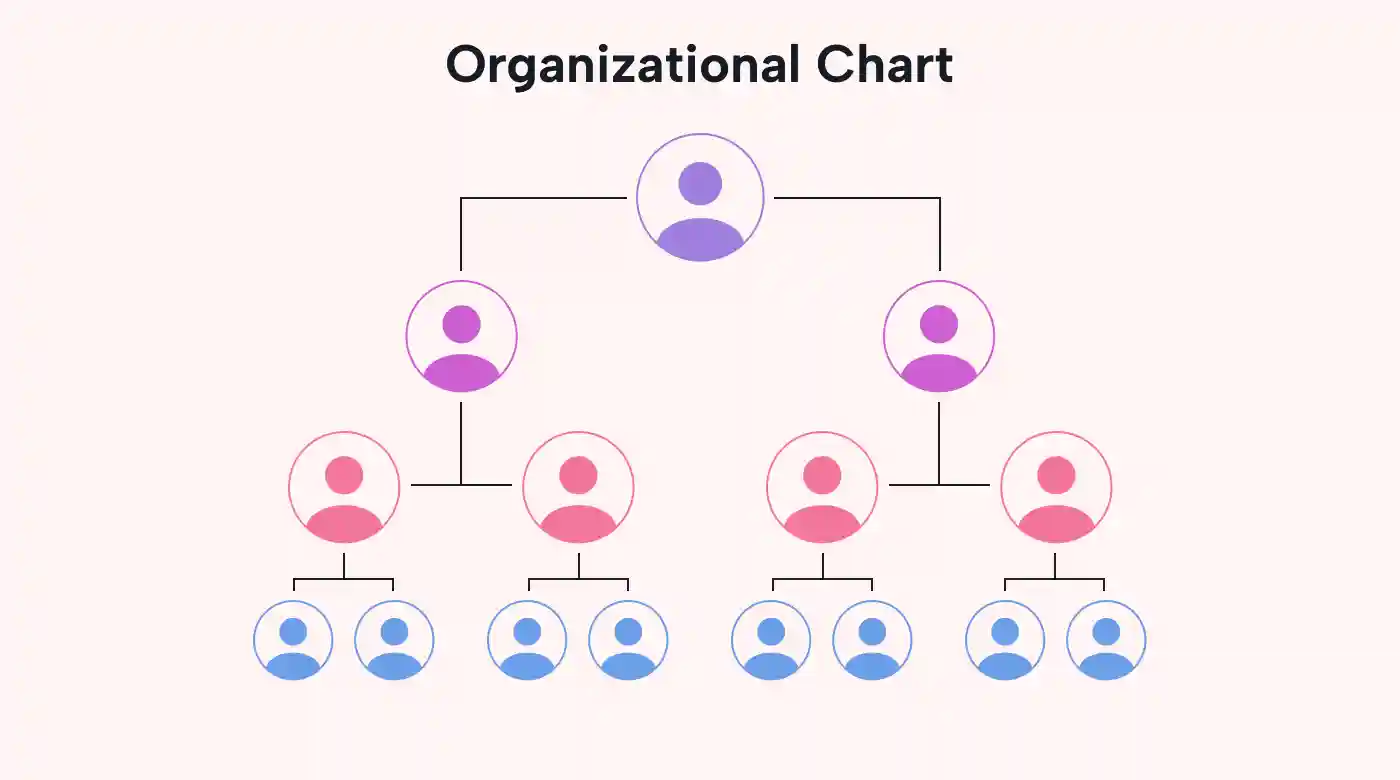 |
A hierarchical structure also helps with coordinating and aligning the efforts of different departments and teams toward shared organizational goals. It creates a chain of command that streamlines problem-solving and communication and prevents unintended overlaps in duties.
Disadvantages of hierarchical management systems
There are some drawbacks to hierarchical management systems, as well.
Hierarchical structures can sometimes lead to bureaucracy and rigidity, both of which can slow down decision-making and innovation. This can be particularly problematic in rapidly changing industries where agility and quick responses are critical.
Additionally, too many layers of management can lead to communication barriers. Specifically, the vision and directives from the top can become diluted or misinterpreted as they trickle down to the lower levels.
Another con is that hierarchical structures can sometimes create power dynamics that discourage lower-level employees from voicing their ideas or concerns. This can lead to a lack of diverse perspectives and decisions being made without a clear picture of the actual problem.
Ultimately, management hierarchies provide structure and clarity to businesses, but they must be balanced with flexibility and open communication channels to avoid rigidity, slow decision-making, and barriers to innovation.
Building on this foundational understanding of organizational hierarchy, let’s explore the typical levels of management used in many businesses around the world.
The 3 main levels of management
Management functions are typically broken down into three main levels — though variations in these levels can and do happen. They are:
- Top-level management
- Mid-level management
- Lower-level management
Let’s look at each of these levels in turn, starting at the top.
1. Top-level management
At the top management level, you find strategic visionaries and decision-makers. This senior management group oversees the development of overall organizational goals and strategies. They also represent the company in legal, business, and public forums.
Top-level management’s key responsibilities include the following:
- Long-term planning and setting of company-wide policies
- Making decisions on mergers, acquisitions, and large-scale investments
- Establishing the company culture and ethical guidelines
- Engaging with high-level stakeholders, such as investors or government entities
While job titles at this level do vary, typical positions include the following:
In large companies, you’ll usually find a Chief Executive Officer (CEO) at the top of the hierarchy. They have the overarching responsibility of carrying out the directives set by the Board of Directors, and they also represent the company to shareholders and the public.
Large enterprises may also have a President (second-in-command) who typically oversees daily operations and implements strategies approved by the board.
In smaller companies, the roles of CEO and President are often combined into one function — usually fulfilled by the owner of the company.
Those in C-level positions, like Chief Financial Officer (CFO) and Chief Technology Officer (CTO), are responsible for setting long-term goals and making high-level decisions for the entire organization.
The Vice President (VP) focuses on implementing strategic objectives in specific areas, such as sales. In many companies, VPs report to C-level officers. The VP of Marketing, for instance, might report to the Chief Marketing Officer (CMO).
 |
Challenges top-level managers often face include balancing short-term gains with the long-term vision and making sure the company can adapt successfully to a rapidly changing business environment.
2. Middle-level management
Managers at this level are usually responsible for implementing the organization’s strategic goals and objectives that come down from the top. They serve as a link between top-level and lower-level management.
Middle-level managers’ key responsibilities include the following:
- Translating upper management strategies into operational plans
- Managing departmental budgets and resources
- Supervising and evaluating departmental performances
- Leading change management and departmental initiatives
Typical positions you’ll find at this level include the following:
- Department heads: Oversee specific business units, such as the Marketing Department or Finance Department
- Branch managers: Manage operations in different geographic locations (e.g., Regional Manager for the Middle East or Country Manager for Colombia)
- Division managers: Monitor various aspects of large, complex departments (e.g., Director of Manufacturing or Human Resources Manager)
Common managerial challenges at this level include the ongoing task of keeping varied departmental goals aligned with the overall company vision and managing interdepartmental communications and conflict.
3. Lower-level management
Lower-level management is usually tasked with overseeing the organization’s day-to-day operations and directly supervising the workforce.
These individuals’ key responsibilities include the following:
- Assigning specific tasks and evaluating employee performance
- Handling operational problems and immediate employee concerns
- Ensuring quality and efficiency in task execution
- Implementing and enforcing company policies at the ground level
Typical lower management-level positions include the following:
- Team leaders: Directly oversee and schedule operational teams (e.g., Graphics Team Leader or Shift Manager)
- Supervisors: Responsible for project management and monitoring and guiding employees in their daily tasks (e.g., Social Media Outreach Supervisor or Production Unit Supervisor)
- Front-line or first-line managers: Manage customer service and front-end operations (e.g., Sales Floor Manager or Front Office Manager)
Challenges these managers often face include balancing task completion with employee morale, handling day-to-day crises, and dealing with resource limitations appropriately.
How much do most managers make?
The US Bureau of Labor Statistics puts the median yearly salary for management positions at $107,360 (as of May 2022). The lowest 10% (mostly junior managers or first-line managers) average $50,290 per year, and the top 10% in senior management average $220,550.
However, keep in mind that manager salaries vary widely per region, industry, and the roles and responsibilities required of these individuals.
What kind of management structure is best for your business?
There’s no firm rule for how to structure a company’s management. However, the size of a business typically dictates the depth and breadth of its management structure.
Let’s look at the optimal management structures for three common business sizes: small businesses, mid-sized businesses, and large enterprises.
Small businesses and startups
Small businesses and startups usually have a limited number of employees and relatively simple operational processes. As such, they often operate with a flat management structure, where the top-level manager (often the owner or founder) directly oversees all employees.
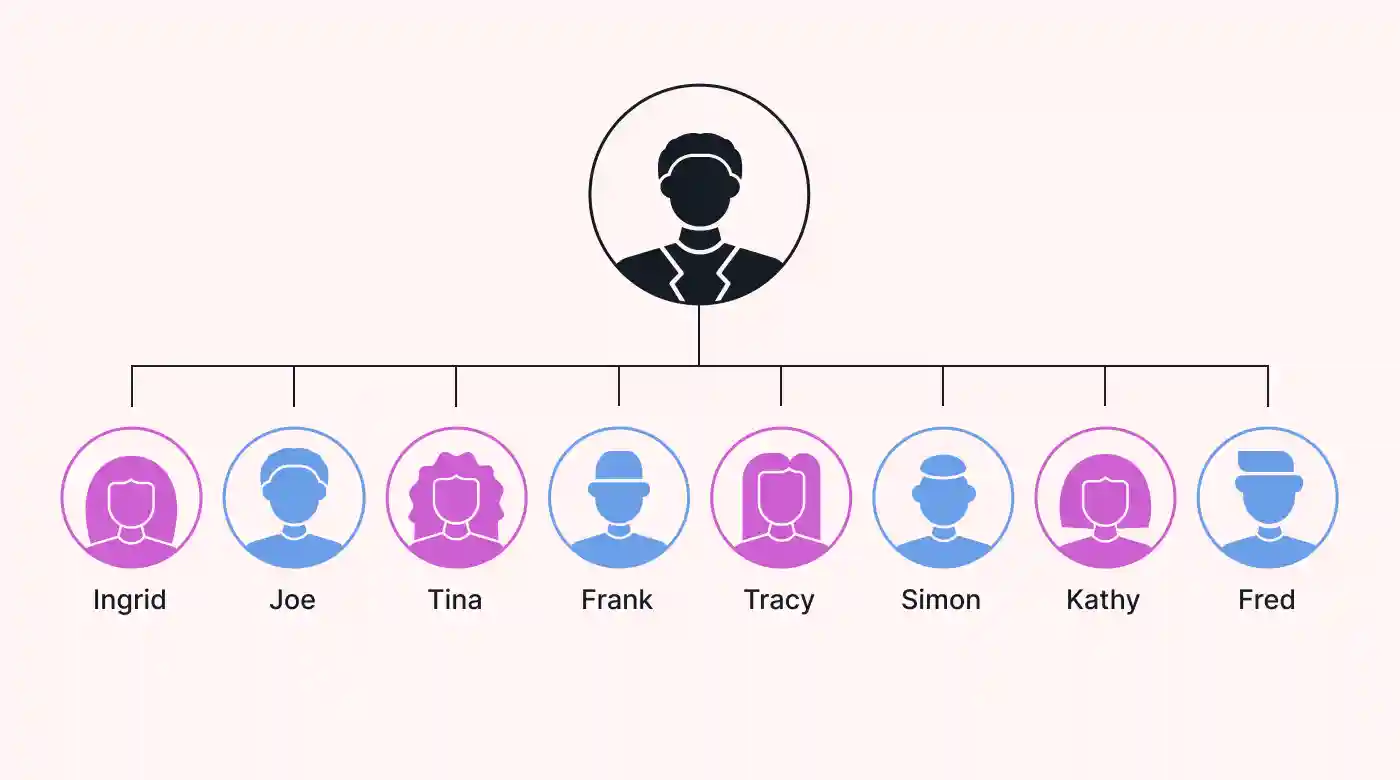 |
For example, imagine “FreshStart Tech,” a small tech startup with 15 employees. The CEO, who is also the founder, directly manages all operations and focuses on vision, strategic planning, funding, and growth. A few team leaders oversee specific projects or small teams. There are no middle managers, which allows for quick decision-making and direct communication between the CEO and the staff.
The advantages of a flat management structure include agility and ease of communication. However, as the business grows, this arrangement may lead to an overburdened top manager and a lack of specialization since most specialized know-how resides with the CEO.
If this management structure becomes a disadvantage, the company will have to look at adding additional management levels.
Mid-sized businesses
As businesses grow in size and complexity, they often require additional layers of management. Mid-sized businesses frequently introduce middle management to bridge the gap between strategic vision and operational execution.
To illustrate this, consider “GreenGrowth Landscaping,” a mid-sized company with 100 employees. They have a top management team that includes a CEO, CFO, and COO.
Below these functions are middle managers, who oversee various departments like Customer Service, Finance, Sales, Operations, and HR. Each department has team leaders or supervisors who manage small groups of employees.
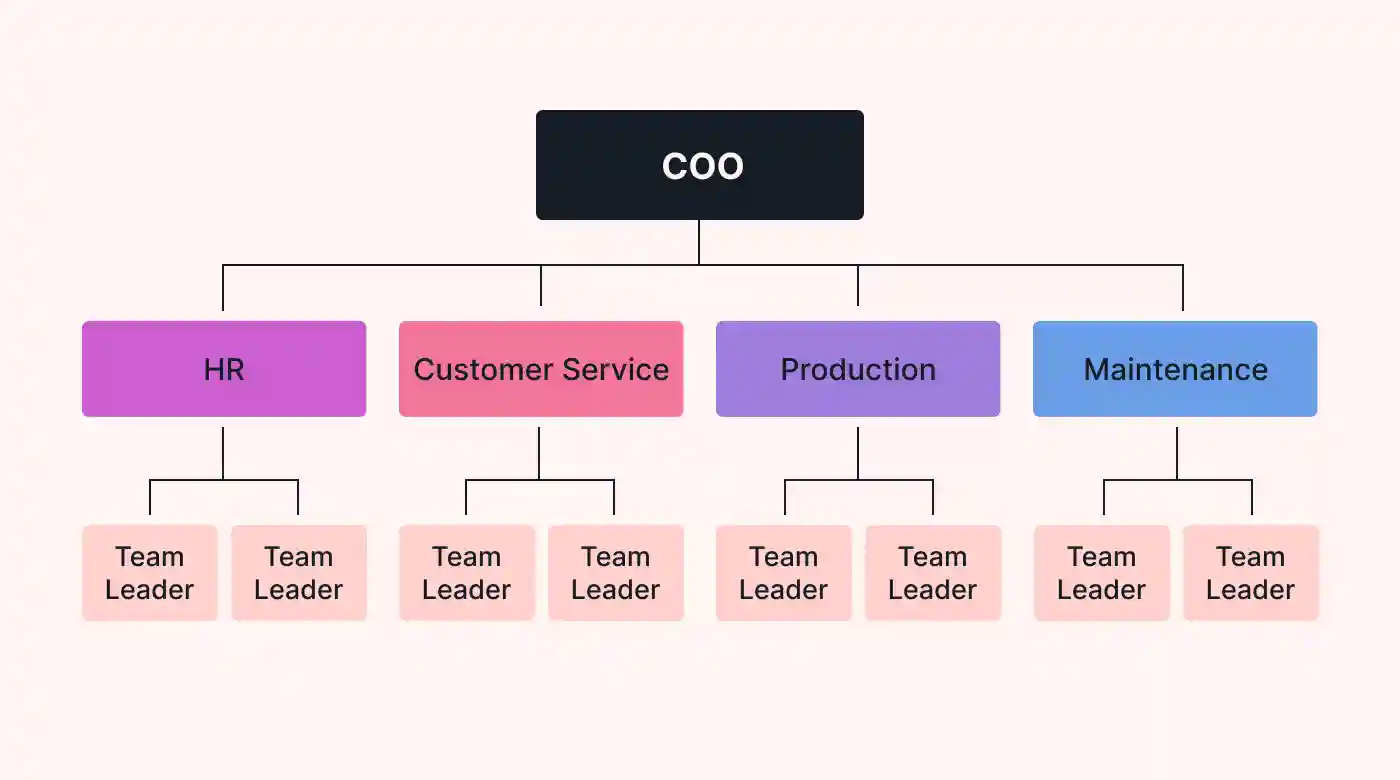 |
Introducing a middle management level helps distribute responsibilities and brings in specialization. But on the flip side, it can also introduce bureaucratic delays and communication challenges.
This means that the company will typically have to spend some time and money on management training to keep the growing hierarchy functioning optimally.
Large enterprises
The typical structure for large enterprises is multi-tiered hierarchical management.
Large enterprises are characterized by the vast scale of their operations. They usually work with multiple departments, teams, and sometimes international branches or offices. To manage this, these companies usually have a more complex (three or more layers) hierarchical management structure.
Let’s imagine a scenario with “Global Retail Group,” a multinational retail corporation with tens of thousands of employees around the world.
This company’s top management includes a Board of Directors and executive officers. Below them are senior managers who oversee various business units (in North America, Europe, and Asia, for example). Each region has its own set of middle managers, and even further down are lower-level managers who supervise specific stores or departments.
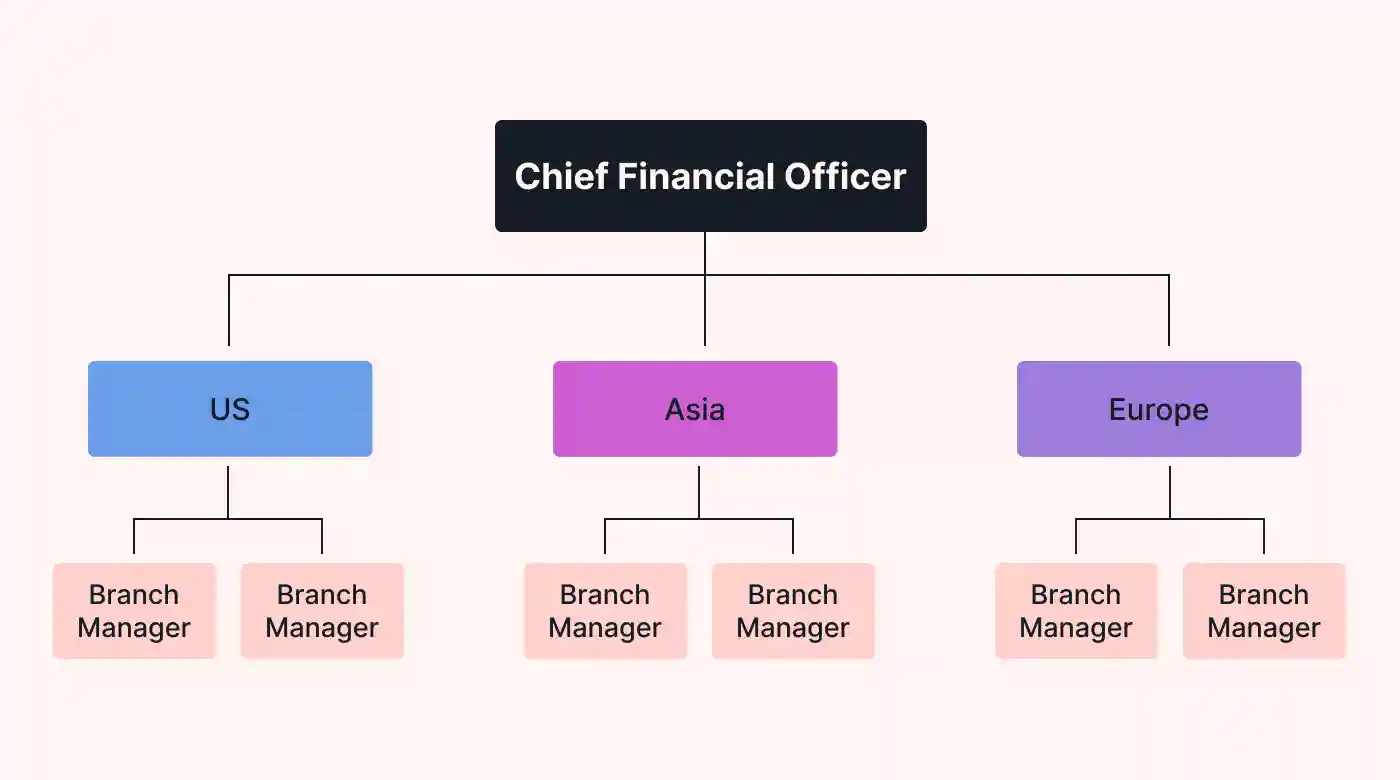 |
The multiple levels of managers are indispensable for overseeing the large workforce and maintaining operational consistency.
While multi-tiered structures in large enterprises allow for the efficient handling of complex operations, they can lead to siloed departments. Other red flags include reduced flexibility and potential disconnect between top management and front-line employees.
Specialized, ongoing management training can counteract these possible pitfalls.
How intelligent project management software can help all levels of management
Regardless of the management structure, businesses of all sizes can reap significant benefits from incorporating intelligent, AI-driven project management software into their daily operations. Motion’s cutting-edge tool is designed to enhance efficiency and productivity across various levels of management.
For top-level managers, Motion’s AI-driven analytics provide valuable insights into project performance and resource allocation, ultimately benefitting strategic decision-making that aligns with long-term goals.
Motion’s ability to predict timelines and resource needs helps in effective planning and foresight — two business skills that are crucial for high-level executives.
Middle-level managers who bridge the gap between strategy and execution find immense value in Motion’s ability to streamline task delegation and monitor progress.
Motion’s intuitive interface also facilitates seamless communication between departments, allowing everyone to stay on the same page and continue working toward common objectives. The software’s real-time tracking features enable middle managers to swiftly identify bottlenecks and adjust workflows accordingly for better overall operational efficiency.
Motion also simplifies day-to-day operations at the lower level, where the focus is on task execution and team management. Its automated scheduling and task prioritization tools help lower-level managers efficiently manage workloads so that teams can complete their tasks on time and maximize their productivity.
The platform also facilitates better and more timely collaboration among team members, an essential responsibility of lower-level management.
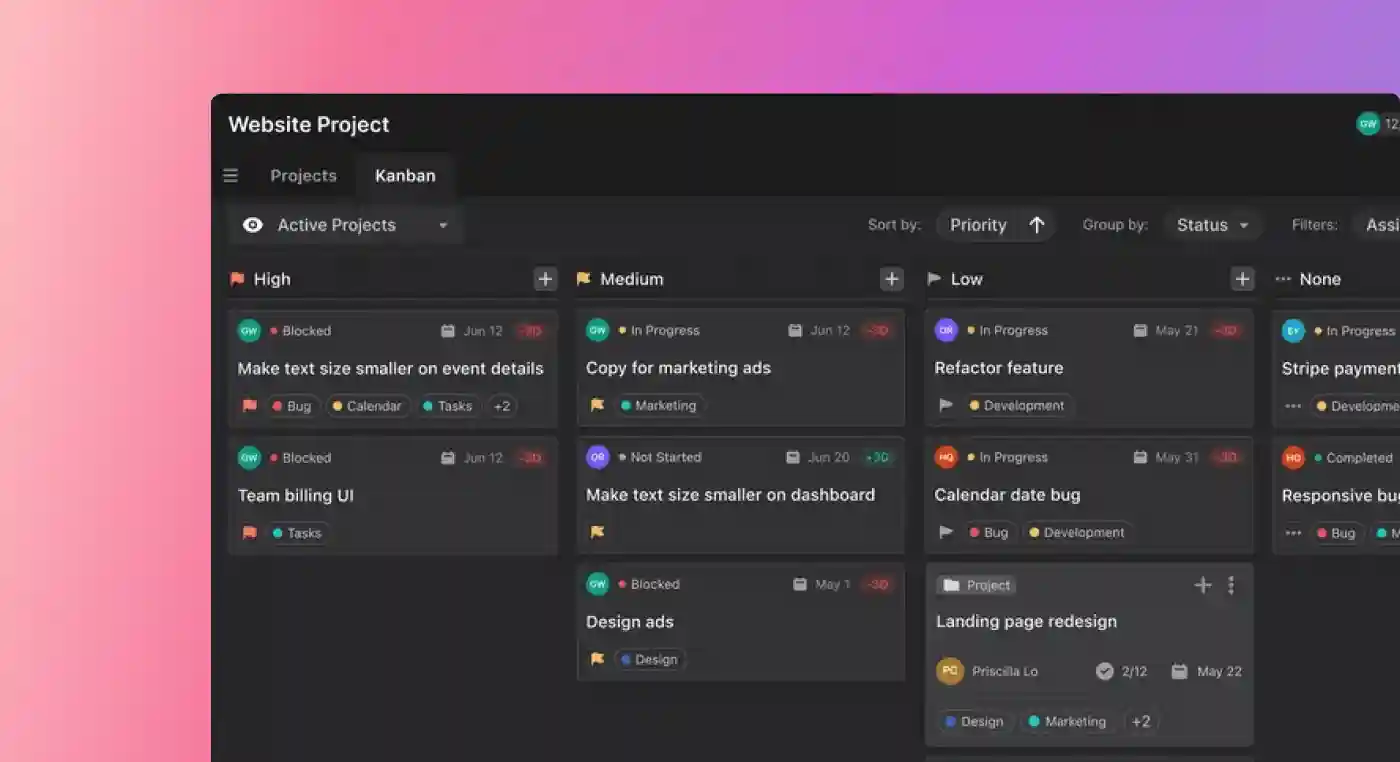 |
In short, Motion’s AI-driven project management software is a versatile tool that can adapt to and enhance any management structure. It helps improve planning, communication, and execution at every tier of an organization.
Improve your management efficiency with Motion
Success in business depends, to a large extent, on implementing effective levels of managers. Each tier, from the top to lower-level management, plays a unique role — and understanding these dynamics can significantly improve your organization’s performance.
Whether you operate with a flat hierarchy in a small business, manage diverse teams in a mid-sized company, or navigate the complexities of a large enterprise, the right management levels will bring efficiency and clarity to your organization.
To optimize your management functions, use Motion’s AI-driven Project Manager tool, which offers tailored solutions for every management level. Experience a transformation in your management efficiency today by trying out Motion for free for 7 days.

A certified content writer and SEO strategist, Carla Groenewegen writes about success principles and practices aimed at SMBs and not-for-profit organizations.




